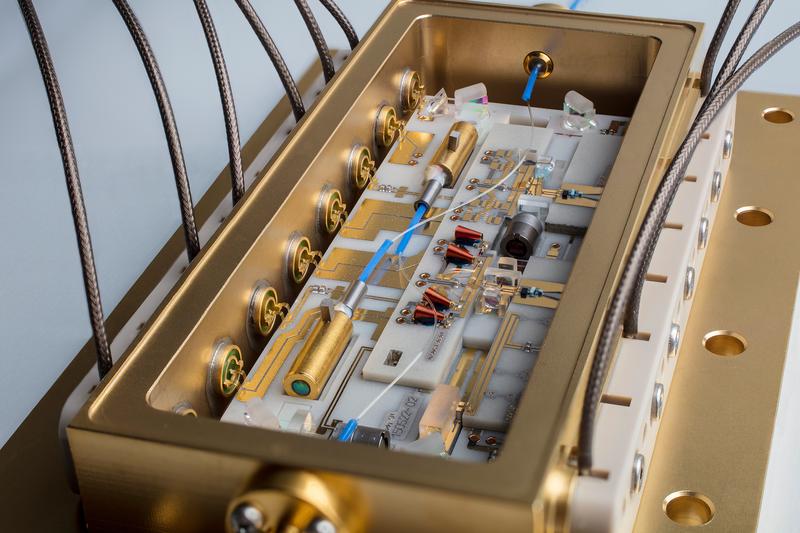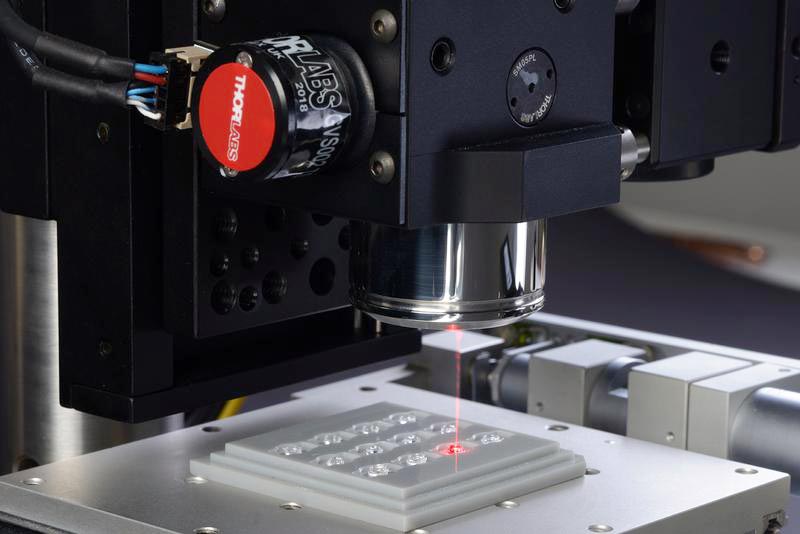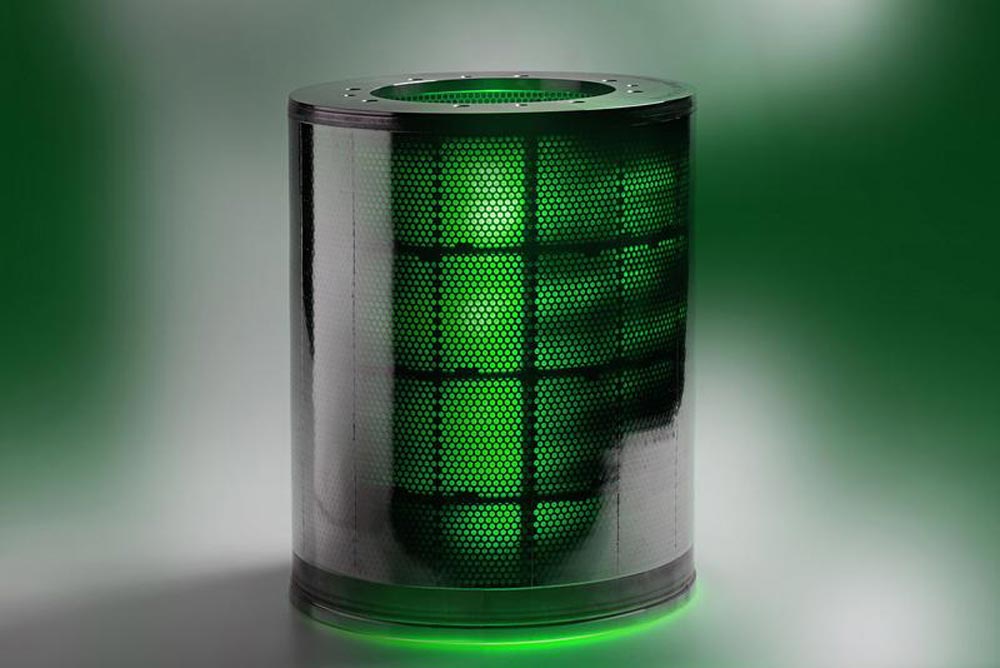

Hybrid bond produced using injection molding.
Fraunhofer ILT, Aachen, Germany
Lightweight components made of fiber-reinforced plastic (FRP) and metal are growing in significance across a wide range of industries, but especially in the automotive sector. When producing these components, one of the key questions is how to bond and cut these different materials in a permanent and reliable way.
Combination of Form-closed Bonding and Specific Adhesion
As part of the BMBF’s HyBriLight project, Fraunhofer ILT has developed an alternative to today’s preferred adhesive bonding technique. “This new process bonds plastic and metal to one another using both form-closed bonding and specific adhesion,” explains Kira van der Straeten, a scientist in the Plastics Processing team.
First, an ultrafast laser performs surface ablation on the metal to create micro- and nanostructures at high structural density. Next, the metal is heated and the plastic is melted using thermal conduction. The molten plastic flows into the microstructures; once it has cooled, this creates a strong, permanent bond between the two materials.
This process can be used to produce hybrid components with extremely high tensile shear strength of around 25 MPa. This degree of strength is above all a result of the strong adhesive effect of the micro- and nanostructures arising from the specific and mechanical adhesion.
Industrial Application of the Joining Technique in Hybrid Injection Molding
A similar process was developed for another hybrid construction method used predominantly in the automotive and electronics industries: injection molding, which produces components made of plastic with metallic inserts.
In Paris, Fraunhofer ILT is presenting a laser-based technology that bonds the plastic and the inserts without additives and with excellent strength. Laser light creates microstructures in the metal; these then fill up with liquid plastic in the subsequent injection molding step.
Once the plastic has hardened, the result is a strong, permanent and form-closed bond with tensile shear strength of over 22 MPa. “We can influence the strength of the bond by altering the density and orientation of the microstructures on the metallic component, which means bond strength can be adjusted to suit future operating conditions,” van der Straeten explains.
Laser Cutting enables Form-locking Joining
Joining techniques such as riveting or other form-locking bonds require precise joining edges. Lasers can achieve the necessary cuts, even when joining materials as different as metal and carbon-fiber-reinforced plastic (CFRP), without wear and using just one tool. At the joint AZL booth, Fraunhofer ILT is presenting a process for cutting stacked layers of CFRP and titanium or aluminum.
“The CFRP is ablated during multiple scans,” explains Dr. Frank Schneider, senior expert in the Macro Joining and Cutting group. “Thanks to a smart scan strategy, the resulting kerf is an ideal preparation for the succeeding metal cut, which is performed during a subsequent pass with the support of cutting gas.” Both halves of the process can also be used on material compounds lined up next to each other in butt joints. In this case, the laser cutting produces a form-locking contour of the components to be joined.
Visitors to the JEC World Composite Show in Paris (March 14-16, 2017) can find out more about these three processes at the joint AZL booth, Booth C79, Hall 6.
Contact
Kira van der Straeten M. Sc.
Group Micro Joining
Phone +49 241 8906-158
kira.van.der.straeten@ilt.fraunhofer.de
Dr.-Ing. Frank Schneider
Group Macro Joining and Cutting
Phone +49 241 8906-426
frank.schneider@ilt.fraunhofer.de















